Join Our Groups
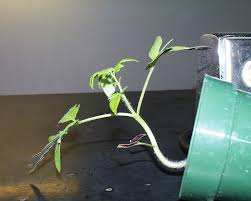
TOPIC 2: MOVEMENT
Concept of Movement and Locomotion
The Concept of Movement and Locomotion
Explain the concept of movement and locomotion
Movement refers to change of position and posture. Therefore the change of position of body parts such as limbs and other body parts.
Locomotion is the movement or change of position of the whole organism from one place to another.
But normally organisms have different kinds of movement. Plants show movement but do not show locomotion.
Since locomotion involves coordination between nervous muscular and skeletal system and all these system enable the organism to locomote.
The Importance of Movement in Animals and Plants
Explain the importance of movement in animals and plants
Animals and plants move about to:
- Find a mate and to reproduce
- Escape danger
- Seek and capture food
- To seek shelter, a suitable habitat/climate
- To avoid competition for food/water, living space etc
- Find water/soil nutrients, and hold leaves to get maximum sunlight
- Seek and capture food
- Obtain support
- Protect themselves from damage from: touch/pressure, pain or sudden temperature change
- Disperse seeds
Movement and Locomotion Actions
Demonstrate movement and locomotion actions
Demonstration of movement and locomotion
Movement action

Movement of the Human Body, the Human Skeletal System
The Structures of Human Skeleton
Describe the structures of human skeleton
The contraction and relaxation of muscles cause muscular movement in vertebrate organisms such as man. The muscles work together with skeletal system to support or allow movement to occur.BONES, CARTILAGE, JOINTS AND MUSCLES
The Functions of the Major Components of the Human Skeleton and their Adaptations
Explain the functions of the major components of the human skeleton and their adaptations
Major Components of the Human Skeleton includeBones, Cartilage, Joints and Muscles
Bones
Bones consist of living cells embedded in a hard substance made mainly: The bones are attached together at the joints by tough flexible fibers known as ligaments
Bones are classified in to long, short, irregular bones and flat.
- Short bones these are short bones, which support weight allowing for many smaller movements. Example bones on the human feet.
- Long bones these are strong, hollow and light containing spongy bone at the end. And spongy bone has open space and holes, which contain red marrow, which is where red cells are made. Example bones on the legs and arms.
- Flat bones these are bones, which support and protect body organs, these comprises ribs, breastbone, shoulder bones etc.
- Irregular bones these bones are for support and such bones are vertebrae also human ear has three tiny irregular bones, which conduct sound.
Cartilage
Besides bones, the skeletal system has tissue called cartilage. It's the strong flexible tissue that gives shape to some parts of the body
The cartilage keeps bones from grinding against each other, between vertebrae cartilage disks act as shock absorbers
Before birth bones are made mostly of cartilage whose cells absorb calcium after birth to produce bones
Joints
The human skeleton has about seventy movable joints.
Pivot Joint:This is the type of joint, which allows one bone to twist against another
NB. Joint is the point where two or more bones meet
Pivot joint allows movement in several directions
Hinge joint is the joint which allows movement in one direction Example elbow
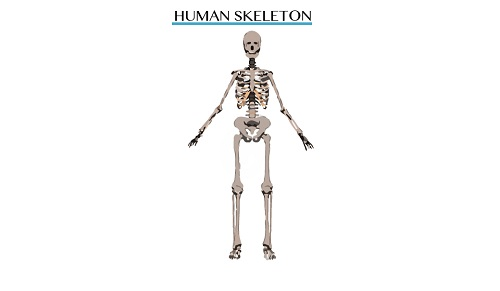
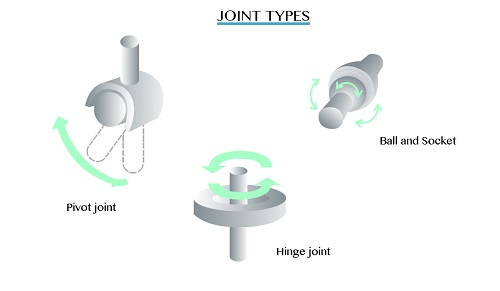
Functions of Skeleton include:
- The human skeleton provides mechanical support for the body
- Protection for internal organs e.g. skeleton of head protects the brain while chest bones protect soft organs such as the heart
- Skeleton functions as framework for anchoring the muscles
- Skeleton, together with muscles, function to bring about movement in an organism
Muscles and Movement
The Concept of Muscles
Explain the concept of muscles
A muscle is a tissue consisting of cells that have the capacity to contract and exert a pull. Muscles are made up of specialized tissues, which are known as contractile tissues. When these tissues contract they become shorter and tighter, as a result they cause movement. All muscles are made up of elongated cells called muscle fibers.
Types of Muscles
Mention types of muscles
There are three kinds of muscles in the body of a mammal. These muscles are skeletal muscles (voluntary), smooth (involuntary) muscles and cardiac muscles.
How Muscles Facilitate Movement
Demonstrate how muscles facilitate movement
Muscles are attached to bones at two points:
- At one point a muscle is usually attached to an immovable bone and other end to a movable bone.
- Muscles may be attached directly or indirectly by means of tendons. Tendons are tough whitish cords of fibrous materials which connect a bone and a muscle
- Muscles can contract and relax, but not expand when muscle contracts it becomes shorter and thicker and hence, exerts a pulling force on bone to which it is attached at a point of insertion.
- When a muscle relaxes, it lengthens and becomes thinner
- Most muscles act in pairs in such a manner that when one member of the pair contracts the other member relaxes. This means that they never contract or relax at the same time
- Muscles acting in pairs in this manner are known as antagonistic muscles. One member of the pair is called extensor while the other member is the flexor
The figure below shows how the two muscles of the upper arms that is the biceps and triceps muscles bringing about the bending and straightening of the limb.
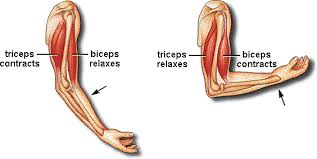
When the triceps (extensor) muscle contracts the limb is straightened. The contraction of the triceps is accompanied by the relaxation of the biceps (flexor). When the biceps muscle contracts the arm bends.
Adaptations of Different Types of Muscles to their Roles
Explain adaptations of different types of muscles to their roles
Skeletal Muscles
- These are the muscles, which are attached to bones of the skeleton
- The skeletal muscles contract powerfully and fatigue quickly
- Their contractions are controlled by the brain for this reason they are called voluntary muscles
Function of Skeletal Muscles
- Skeletal muscles are concerned with the movement of the limbs and parts of the skeleton
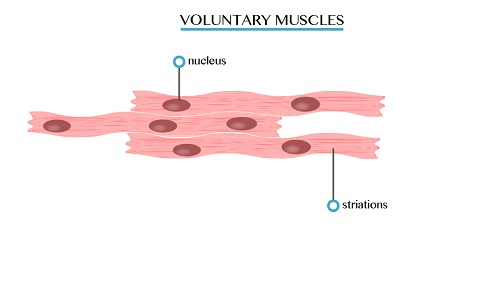
Smooth Muscles
Smooth (involuntary) muscles are found on the walls of internal organs such as alimentary canal, blood vessels and bladder.
- These muscles are made up of cells which taper at both ends (spindle shaped)
- Smooth muscles contract slowly
- The contraction of the smooth muscle is involuntary (it is not controlled by the brain)
Function of Smooth Muscles
The smooth muscles, which are formed in different organs contract and relax to cause movements of materials through them. Example: peristalsis in alimentary canal causes movements of the materials through the canal with the help of smooth muscles.

Cardiac Muscles
This is the type of muscle, which is found only in the heart. These muscles are made up of muscle fibers which branch and connect to each other like a network.
Function
- Contraction of cardiac muscles causes the heart to keep on pumping (i.e. heart beat)
Causes, Effects and Preventive Measures of Muscles Cramps
Explain causes effects and preventive measures of m cramps
A muscle cramp is an involuntary and forcibly contracted muscle that does not relax. The cramp may involve a part of muscle, the entire muscle or several muscles that usually act together. Any of the muscles that are not at our voluntary control can cramp.
Sometimes it occurs when the body lacks salt especially for those people who work hard in hot weather they sweat a lot and get painful cramps in their legs, arms or stomach.
Causes Muscle Cramps
There are basically two major causes of muscle cramps that are:
- Lack of water or salt in the body
- Lack of oxygen in the muscles (inadequate oxygenation of muscles)
Prevention of Muscle Crampa
- Cramps from poor breathing (lack of oxygen) can be improved by rapid breathing as well as stretching the muscles
- A muscle cramp from lack of water or salt can be treated by stretching the muscles and drinking many glasses of water, which contain salt so as to replace the amount of salt lost in the body
Treatment of Muscle Cramps
Applying a soft massage on the cramped muscle, stretching the muscle and applying oil ointment on the affected area, can treat a muscle cramp.
Movement in Plants
The Concept of Movement in Plants (Movement of Curvature)
Explain the concept of movement in plants (movement of curvature)
Generally plants do not show locomotion (movement of the entire organism). However, movement of individual plant organs is possible and modified by sensitivity of the plant to external stimuli.
Plant movements in response to internal stimuli are known as spontaneous movement. Examples of these movements are metabolic conditions, disease conditions, vex ages and parental influence Those movements shown by plants in response to external stimuli are known as induced or irritablemovements.
Types of Movement Exhibited by Plants
Mention types of movement exhibited by plants
Normally there are two types of plant movements, which are:
- Spontaneous movement
- Induced (irritable) movement
Spontaneous Movement is plant movement in response to internal stimuli. Example of these movements are metabolic conditions, disease conditions, vex ages and parental influences
Induced or Irritable Movement is the type of plant movement shown by plants in response to external stimuli. Light, temperature, gravity, touch, water and chemical substances are examples of induced movement.
Induced movements include nastic movement, tactic movement and tropic movement.
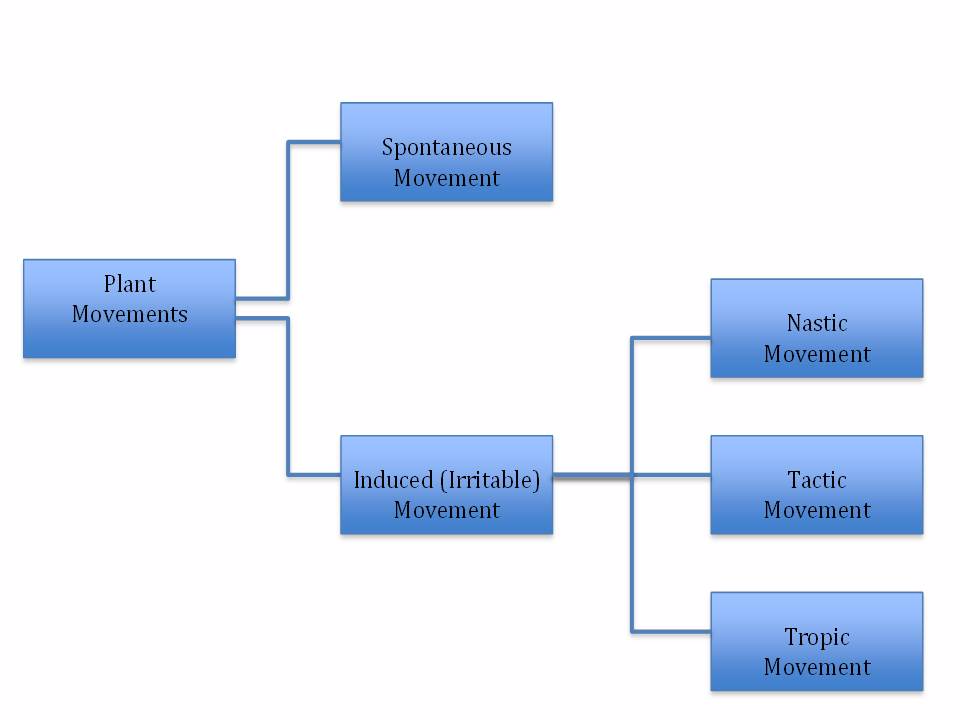
A summary of the types of movements shown by plants in response to stimuli.
STIMULI
- Light
- Chemicals
- Water
- Temperature
- Contact
- Gravity
- Gravitactic or Gravitaxis
Tropic Movements in Plants
Tropic movements are the growth movements shown by a fixed part of a stationary plant towards or away from a stimulus coming from one direction. Tropic movements are also known as tropism movements.
Tropic (tropism) is growth movements, which take place at a very slow pace. The growth movement is caused by an increased or decreased rate of growth on the side of the organ, which is under the influence of the stimulus, with respect to the opposite side. This results in growth in curvature.
There are various types of tropic movements, these types are:
- Phototropism or phototropic which is a growth movement shown by part of a fixed plant in response to light
- Hydrotropism (Hydrotropic) which is growth movement in a response to water
- Thigmotropism (Thigmotropic) which is the growth movement in response to touch
- Chemotropism (Chemotropic) which is a growth movement made by plants towards chemicals
- Thermotropism (Thermotropic), a growth movement shown in plants in response to heat.
Experiments to Investigate Movement in Plants
Carry out experiments to investigate movement in plants
An experiment to investigate movement in plants





I like this notes is very good and is easy to understand
ReplyDeleteI like this notes because they are very good and clear
ReplyDeleteYeah is a clear so much my friend
Delete